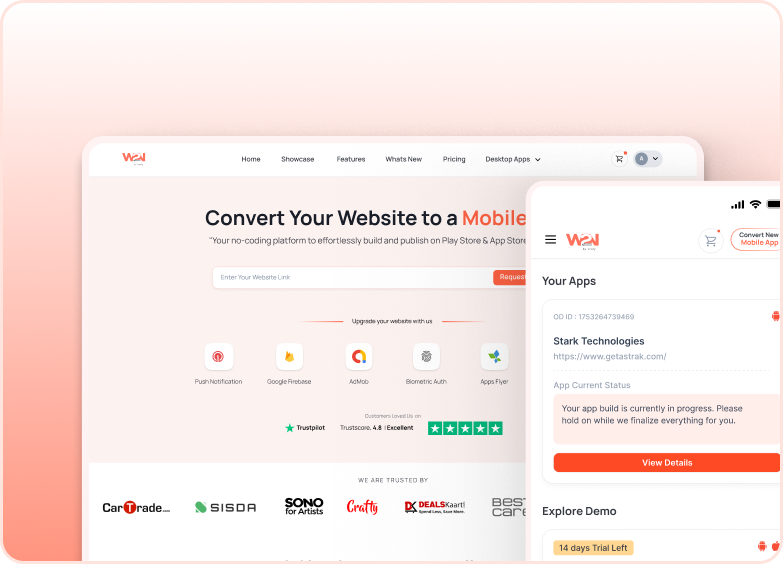App Settings for Android
1. Status Bar Color
Set the color of the status bar. The status bar is the horizontal bar at the top of the screen that displays device information such as time, battery status, and notifications. Use hexadecimal color codes to specify the color. For example, #FFFFFF represents white.

2. Screen Orientation
Screen Orientation controls how the app layout appears— Portrait, Landscape, or Both. This feature improves usability across different screen sizes.
- Portrait: Set the app screen to portrait orientation, allowing users to view it only vertically.
- Landscape: Set the app screen to landscape orientation, allowing users to view it only horizontally.
- Both(Portrait & Landscape): Allow users to view the app in both portrait(vertically) and landscape(horizontally) orientations.

3. Pull to Refresh
Enable this option to allow users to pull down on the screen manually to refresh the content displayed in the app. This is commonly used in apps that display dynamic content, such as news feeds or social media timelines.

4. Show Loader on Page Navigation
Enable this option to display a loading indicator (loader) when users navigate between pages within the app. This provides visual feedback to users that the app is fetching or processing data.

5. Show on Internet Screen
Enable this option to display a screen indicating no internet connection when the device is offline. This helps users understand why certain app features may not be available and prompts them to check their internet connection.

6. Enable Full Screen
Enable this option to display the app in full-screen mode, hiding the status and navigation bars. This provides an immersive experience for users by maximizing the available screen space.

7. System Navigation Bar Color
Set the color of the system navigation bar to match your app’s theme. The navigation bar is the horizontal bar at the bottom of the Android screen that contains system navigation buttons such as back, home, and recent apps. Use hexadecimal color codes to specify the color.

8. Enable Pinch to Zoom
Allow users to zoom in and out by pinching on the screen. This feature benefits the app, which displays images or text that users might view in detail.

9. Add a Callback on App Rename
Add a callback function or trigger a specific action when the app resumes from the background. This lets you perform updates or actions as soon as the user returns to the app.

10. Disable Caching
Disable Caching to make sure that the app always gets the up-to-date content from the server. This can be useful for apps where content frequently changes and needs to be updated in real-time.

11. Disable Screenshot
Prevent users from capturing screenshots within the app. This can be beneficial for the apps that display sensitive or confidential information that should not be shared or saved outside the app.





